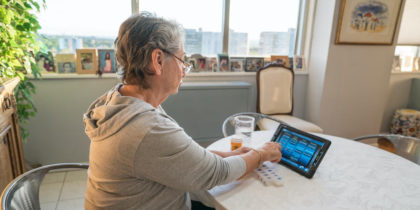Shopping for telemedicine solutions can be equally exciting and daunting. With so many options and potentially limited funds, it requires staff and ITDMs to make some tough decisions.
In 2017, 88 percent of hospital leaders planned to invest in telehealth technology this year, according to the American Telemedicine Association’s annual Telemedicine Executive Leadership Survey. Why? A whopping 98 percent said telehealth services create a competitive advantage, and 84 percent said they expand an organization’s reach.
Well-implemented telehealth solutions benefit hospitals and patients alike. The challenge is that telehealth comprises many different solutions, including technologies for remote patient monitoring, virtual visits, store-and-forward and mHealth. Each of these four telehealth categories includes a variety of technologies, offered by a variety of vendors.
With so many choices, where do you even start? First things first: Determine which healthcare technologies would benefit your organization most.
Getting Your Telehealth Priorities Straight
Maybe you already have some telemedicine solutions in place and plan to expand your offerings, or maybe you’re starting from scratch. Either way, you want your next investment to deliver immediate and impressive results — the kind of ROI that wows stakeholders and justifies future telehealth investments.
To determine which solutions will make that kind of impact for your organization, consider these three questions:
1. What are our top strategic priorities?
Every hospital shares some strategic goals: improve the patient experience, reduce readmissions, lower costs, increase staff productivity and get better health outcomes. Depending on the hospital or health system, your organization might also be focused on growing the patient population, attracting new demographics, extending the provider network or other growth-related goals.
Of all these competing goals, which are the greatest strategic priorities for your organization right now, and which telemedicine solutions would best address those challenges?
Revolutionize the Patient Experience
See how innovative hospitals are using digital technology to keep patients happy and healthy. Download Now
For example, say your readmission rates were high last year and you’re trying to avoid the associated government penalties next year. Consider remote patient monitoring solutions as a way to improve follow-up care, or bedside mHealth education that teaches patients how to better manage chronic conditions from home. On the other hand, if you’re focused on boosting productivity or growing your provider network, consider how store-and-forward technology could help physicians better collaborate with one another, regardless of location.
2. Where are our greatest communication gaps?
Clear communication is essential for every aspect of running a hospital, but what are your greatest communication challenges?
Does your always-on-the-move staff need better mobile solutions so they can quickly access patient information and communicate with one another, without stopping to find an available computer? If they routinely consult with other healthcare facilities, perhaps they could also benefit from store-and-forward technology or secure video conferencing technology.
What about your patients? If recent customer satisfaction surveys show doctor-patient communication is subpar at your organization, consider how mHealth solutions like mobile patient portals or bedside-EHR access could help bridge the gaps between in-person interactions, in and outside the hospital.
3. Who are our patients, and what types of telemedicine solutions do they want or need?
Think about the demographics of your current patients, as well as the patient populations you want to grow.
Hospital inpatients tend to skew older, and since half of American adults suffer from one or more chronic conditions, remote patient monitoring and mHealth-powered disease management education are certainly valuable. If your hospital treats many pediatric patients, interactive mHealth solutions can help entertain and distract them from pain.
Want to attract more young adults, busy families or rural dwellers to your clinics? You can make healthcare more convenient for them by offering virtual patient visits. It can take a lot of time and effort to transport someone to a doctor’s office for check-ups. Telemedicine is not just there to make it easier for the doctors but even more so for the patients and their families.
Getting Team Buy-In for Telemedicine Solutions
The questions above will help you decide what you need from a telehealth solution. But they’re not questions that IT leaders should answer alone. Loop in physician and nursing leaders, department heads, patient experience teams and anyone else who understands what your staff and patients want from healthcare technologies.
This will help you decide which solutions will make the greatest impact for the organization, and getting input from end users helps ensure they’ll actually use the solutions, making it easier to justify the next telehealth investment and the next.
Learn more about how healthcare technology solutions can enhance efficiencies and improve the patient experience.








